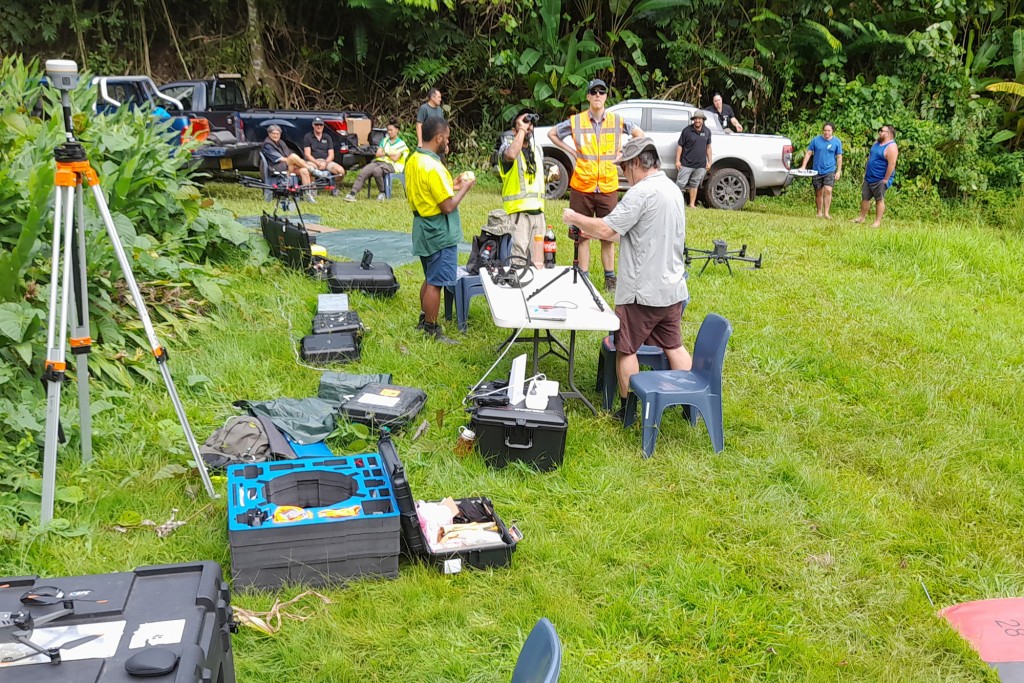Weed busting success in Rarotonga
Saturday 25 November 2023 | Written by Supplied | Published in Environment, National

Taking tech to the battle of weeds involved using drones equipped with either grab claws or cameras, and bench-top hyperspectral measuring equipment able to interpret imagery of target areas collected by drones, aeroplanes and satellites. It’s heavy work. Manaaki Whenua/23112451
There was a satisfied sigh across Rarotonga recently. Two visits by Manaaki Whenua Landcare Research NZ researchers to the Pacific island had revealed that the natural enemies introduced over the past few years to attack various weeds were all performing, or beginning to work, as expected.
The team was most interested in the leaf-mining flea-beetle (Paradibolia coerulea) and the gall-forming mite (Colomerus spathodeae), which target African tulip tree (Spathodea campanulata), a fast-growing tree that is widespread throughout the Pacific region and ranked in the top 10 of the worst invasive species in the world.
During a monitoring visit in the Avatiu Valley and the Takitumu Conservation Area, researchers used a drone with a claw to sample African tulip tree and check for beetle damage up in the canopy.
Manaaki Whenua’s Paul Peterson says the drones are part of an experimental project looking at different methods to map invasive weeds and the impact of natural enemies.
“We are trialling the use of satellite imagery (50 cm resolution), imagery from an aeroplane (10 cm resolution), and drone close-up imagery (less than 4 cm resolution).
“As well as using RGB (visible) photography, the team also collected multi/hyperspectral imagery (to capture light reflected that can’t be seen by the naked eye) and LiDAR. It is likely that a combination of these methods will be used to produce the weed distribution maps for future impact assessment studies.”
Previous releases include the red postman butterfly (Heliconius erata) to target red passionfruit, and the balloon vine rust fungus (Puccinia arechavaletae), which is the natural enemy of the balloon vine.
Within six months of the release of the fungus on Rarotonga in December 2017 there had been a 90 per cent decrease in balloon vine cover in some areas. Within two years of the releases the total percentage cover of the vines at the 20 release sites declined from over 75 per cent cover to under 30 per cent.
On a recent visit to Rarotonga, Manaaki Whenua researchers Dr Alana den Breeyen, Temo Talie, and Stephanie Morton worked with Rarotonga’s National Environment Service and Te Ipukarea Society to collect samples of the red postman butterfly for an evolutionary study to see if this butterfly maintains its bright warning coloration over time in a more benign environment.




































